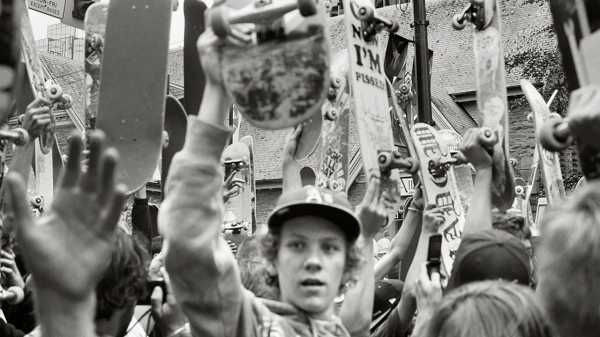
Save this storySave this storySave this storySave this story
Ed Templeton has spent a big chunk of his life as a travelling salesman. He became a professional skateboarder in 1990, just before the end of his senior year in high school, and a few years later he started his own skateboard company, Toy Machine. The process was pretty simple and pretty gruelling: he signed up some of his fellow-skaters as endorsers, got some boards printed up, and then embarked on an endless series of cross-country promotional tours. The itinerary was determined by the location of skateboard shops, which hosted get-togethers where Templeton and his friends showed fans what they could do. “The shop might pay us eight hundred dollars, or a thousand dollars, for the demo,” he told me. “That would pay for hotels and gas to get to the next stop.” Often, Templeton was not just skating but also driving the van, and acting as de-facto tour manager. He was at least a few years older than everyone else, and he was also sober and married—an anomaly even within his own tight-knit group.
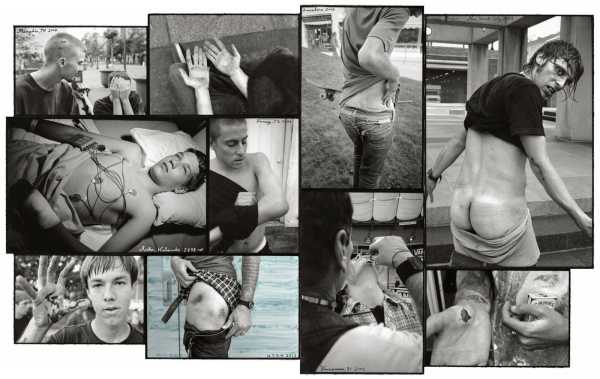
Clockwise from top left: Skaters, Memphis, Tennessee, 2002; Billy Marks with burnt hands, Cologne, 2003; Matt Bennett, Barcelona, 2005; Diego Bucchieri, New York City, 2003; Andrew Reynolds, Chicago, 2006; Barry Zaritsky mending Trevor Dunnett’s split chin, Vancouver, 2003; Donny Barley with a “swellbow,” Tampa, Florida, 1999; Josh Harmony with a hurt hip, Salt Lake City, 2012; Andrew Reynolds with a bloody hand, Irvine, California, 1999; Arto Saari after heart surgery, Helsinki, 1998.
For Templeton, one of the upsides of being the owner was that he could put whatever he liked on the boards: Toy Machine became known for decks emblazoned with cartoonish monsters and ads full of sardonic corporate-speak. (The brand’s official name is Toy Machine Bloodsucking Skateboard Company.) When he wasn’t skating, Templeton was often painting, and even when he was skating he was taking photographs; soon he fell in with a cohort of like-minded skater-artists, including the director Mike Mills, who in 2000 made Templeton the star of one of his first films, “Deformer,” a short documentary. “A lot of people I know had a fucked-up family, you know—and it deforms you,” Templeton says, in the film. “But I got maybe deformed in a better way.” He grew up in Huntington Beach, California, with a mother whose life had been changed by childhood brain damage, and two grandparents who were in no position to exercise much control over a rangy teen-ager who didn’t want to do much of anything besides skate.
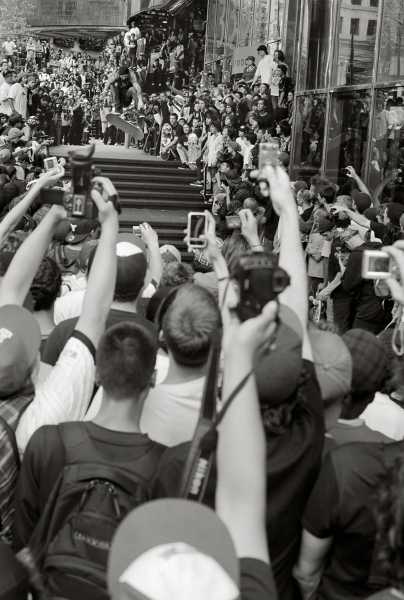
Andrew Reynolds skateboarding, surrounded by a crowd of fans, Vancouver, 2009.
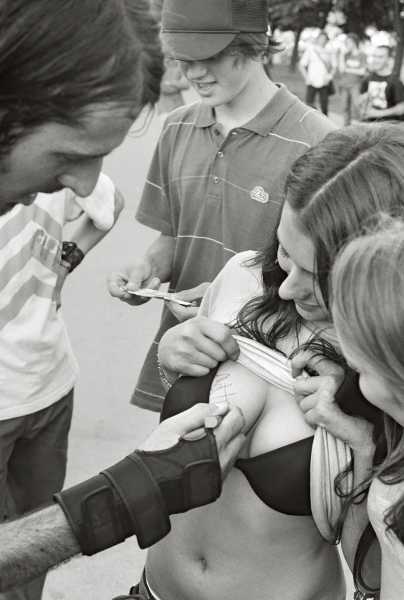
Matt Bennett signs a fan’s breasts, St. Petersburg, Russia, 2007.
Templeton has never really stopped skateboarding, but he more or less retired in 2012, at the age of forty, after breaking his right tibia and fibula. (Video cameras captured the fall, and Templeton’s gritted-teeth reaction as fellow-skaters gathered around him. “I know I snapped it—it’s gone, it’s broke,” he said.) His new book of photographs, “Ed Templeton: Wires Crossed,” published by Aperture, re-creates the years from 1995 to 2012, when he was skating and shooting obsessively. The photographs, many with lovingly handwritten captions, depict the intimacy and aimlessness of touring life: a van full of young people who feel as if they know everything important about one another, all of them always looking for something fun to do, and often finding it. Sources of entertainment include roadkill, swimming holes, pornographic magazines, feckless security guards, and a quantity of alcohol that would seem quite incompatible with riding a wooden board attached to four little wheels. Often, the joy and business of skateboarding itself is somewhere just out of frame. On one page, beneath a photograph of the pro skater Nate Broussard looking exhausted, Templeton adds an explanation. “The pressure on skaters to perform is immense,” he writes. “Some days no matter how hard you try, your body physically gives up, your brain melts, and you end up lying bloody on the asphalt in tears and defeat.” This comes near the end, and it colors all the other pictures in the book, making it possible to see the hard work that enables—and, perhaps, necessitates—all this goofing around.
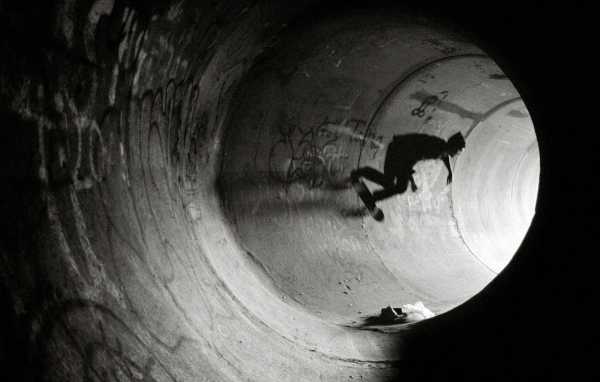
Austin Stephens, Las Vegas, 2010.
Templeton’s book is unsparing but nonjudgmental. The damage accumulates slowly, as what seems at first like youthful fun grows more uneasy. Young female fans lift up their shirts to get their torsos autographed; a skater chops lines of cocaine; just about everyone bleeds, especially Templeton, who says he has suffered six serious concussions over the years, not all of which he remembers. (In this world, helmets are not merely optional—they are effectively banned.) One page of Polaroids captures Jake Phelps, the beloved editor of the skate magazine Thrasher, who died from a fentanyl overdose, in 2019. And even people who have never watched a skate video may recognize a 1999 photograph of Bam Margera, who became a celebrity on the skate-adjacent MTV show “Jackass,” and who is lately known for his chaotic life, and for his trips to and from various rehabilitation centers.
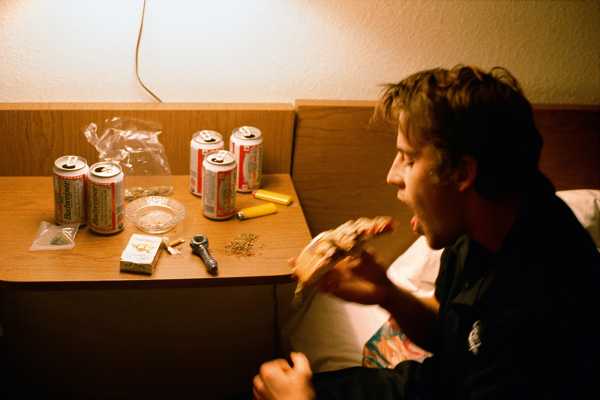
Donny Barley, location unknown, 1998.
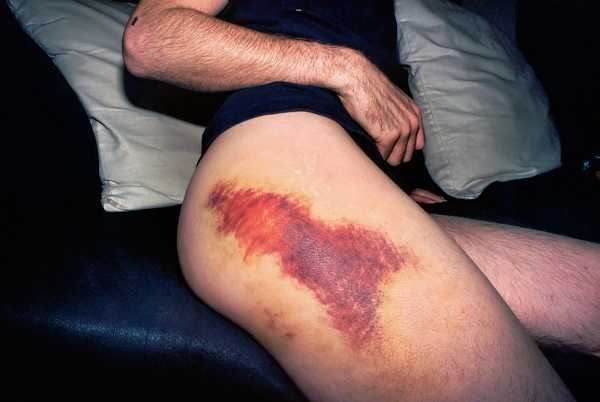
Ed Templeton with a bruised hip, 1995; photograph by Deanna Templeton.
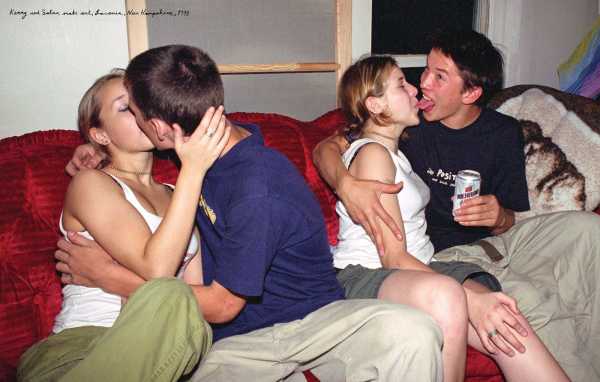
Kerry Getz and Satva Leung making out, Laconia, New Hampshire, 1998.
“Wires Crossed” is in large part a book about survival. It includes interviews, at the end, with a handful of its subjects, including Elissa Steamer, who often found herself the only woman skater in a van full of guys, and who found it bittersweet to see photographic evidence of “how fucked up I was back then.” (She says she has been sober for fourteen years.) Another skater, Brian Anderson, talks about how he felt that he couldn’t let any of his friends or fans know that he was gay—it turns out, of course, that the comrades in the van didn’t really know everything important about one another.
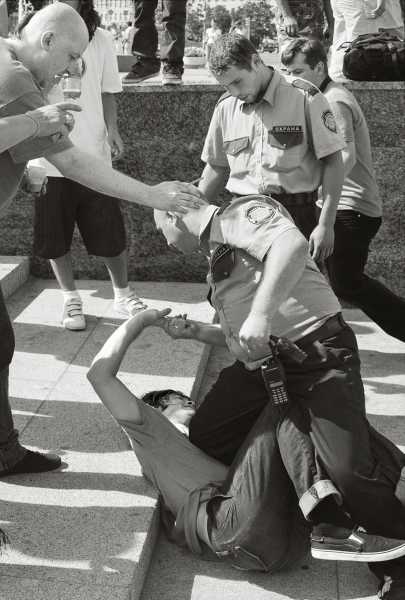
Josh Harmony tackled by Russian police, St. Petersburg, Russia, 2007.
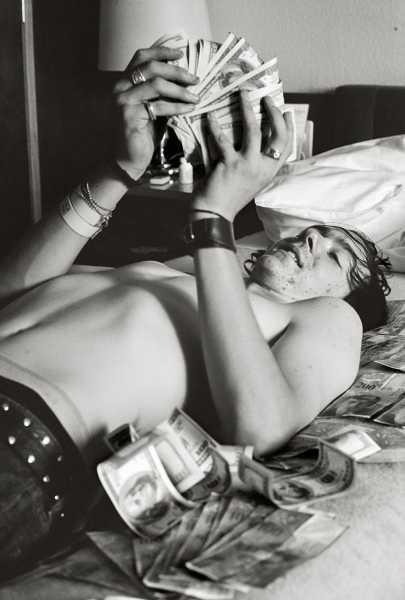
Caswell Berry with contest prize money, Barcelona, 2002.
When I talked to Templeton, he was in the Netherlands for the opening of an exhibition of his photographs at the Bonnefanten Museum, in Maastricht. He hadn’t brought his skateboard—in fact, it had been nearly two months since he’d been on one. “We had a ramp set up at the museum, and I guess I was tempted, a little bit, to maybe skate it,” he told me. “But I didn’t.”
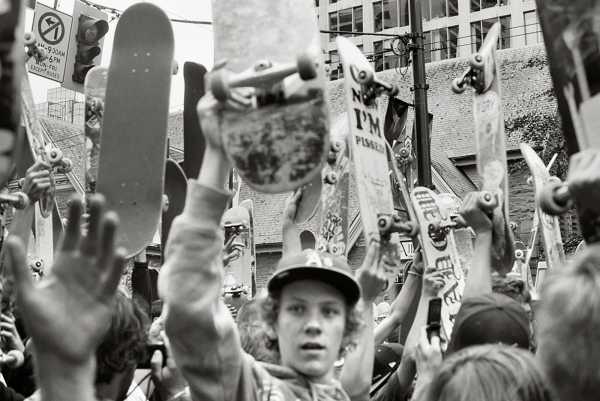
Skaters rally on Go Skateboarding Day, Vancouver, 2009.
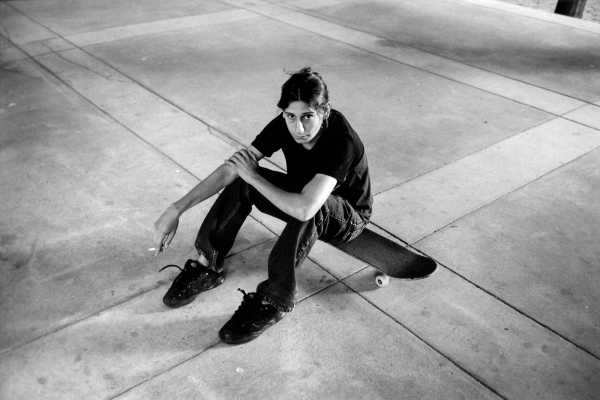
Elissa Steamer, New Haven, Connecticut, 2001.
Sourse: newyorker.com






